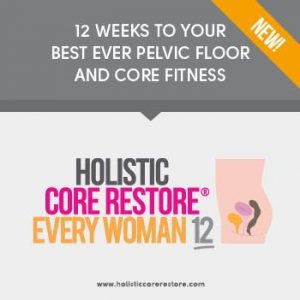Do I have Diastasis Recti?
Diastasis Recti is also known as abdominal separation. Sounds pretty scary but it is actually very common and some research suggests it happens in all pregnancies, but for some ladies it may heal up before it is noticed.
Why does it happen?
The rectus abdominals are the tummy muscles that run down the front of the tummy, from ribs to pelvis. I like to think of these are being like a zip. There are 2 bands of muscles that run down with connective tissue called the linea alba in between. When you are pregnant this area has to expand to accomodate the growing baby. This means the tissues and muscles are stretched, hence this separation can occur. For some it may occur sooner in pregnancy than others which can be due to a whole host of factors. Your pre-pregnancy muscle tone, your collagen type, if you are hypermobile or not, your nutrition and your current exercise routine can all be factors.
What can I do to help in pregnancy?
During pregnancy itself there are things you can do to minimise this seperation.
- Keep your core strong. Pilates is an obvious option! Do make sure that any exercise classes you attend or DVD’s that you do at home are suitable for pregnancy and taught by someone who knows what they are doing. A weekend pre/postnatal course is not enough and yet that is often the level of qualification fitness instructors have. So it is worth having a chat to check their knowledge base out and question any moves you are not sure about.
- Breathing is a great way to activate your core and practice the skills you will need postpartum to help with the healing. Breathing into your ribcage, your back, your tummy and pelvis. Letting the breath expand you and your muscles relax. Then exhale from the pelvic floor upwards and your core should engage.
- Don’t overload yourself. Loaded moves like lifting or anything that makes you strain should be reduced. This can lead to pressure on that abdominal area. Always exhale on exertion.
- Log roll like a pro. When you get up from lying always log roll onto your side rather than sitting up. In fact any sit ups, planks, or intense core work should be stopped.
What can I do to help after baby?
Initially you need your rest, so don’t feel the pressure of bouncing that body back or jumping into exercise. Exercise is the last thing on the list for healing, read here for why. Instead here are 3 things to do:
- Deep breathing. Use that core breathing to help your core fire and relax (the video below has breathing tips), your pelvic floor engage and relax and to chill our your nervous system, read more on that here.
- Nutrition. Eating a diet with plenty of fibre to help your bowels work without strain, fluid to keep things moving nicely, protein for the connective tissue and muscle healing and fruit and veggies for those micronutrients and antioxidants. It all makes a difference.
- Posture. Keep on top of where your ribs, pelvis, shoulders and neck are. It is key. When breastfeeding, nappy changing and sleep deprived your body will start to round forward. Yet these rounded shoulders and slumped postures mean those tissues are saggy and it is harder for them to heal up. So take time in your day to correct your posture. Ribs over pelvis, shoulders down, neck tall, pelvis in neutral.
- Abdominal massage can be helpful. It is good to know how your abdominals feel and to give them some love! Check out my video on this here:
If you need some help then I offer a postnatal package of massage, assessment, breath work and nutrition tips, possibly movement if it is appropriate. You can contact me: [email protected] or book a slot in my diary here.
A session may include:
- Some yummy massage to release those tight areas in maybe your neck and shoulders.
- Some abdominal massage too to allow those muscles to let go and heal.
- A diastasis recti assessement.
- Teaching you about core breathing.
- Nutrition tips if wanted.
- Movement advice.
- Home care tips for what to do to help you heal.











